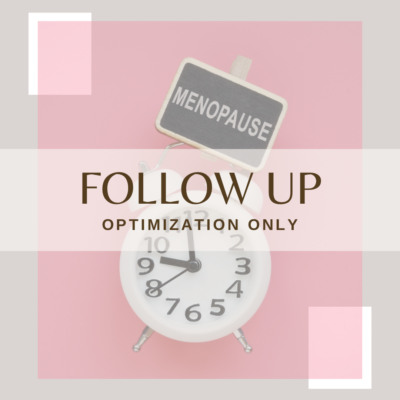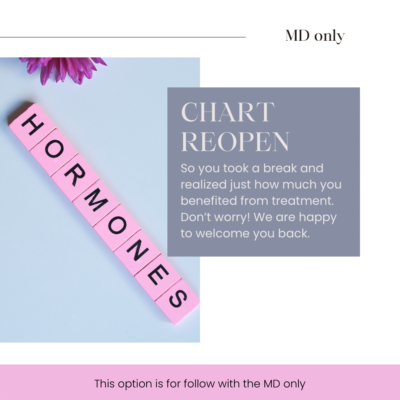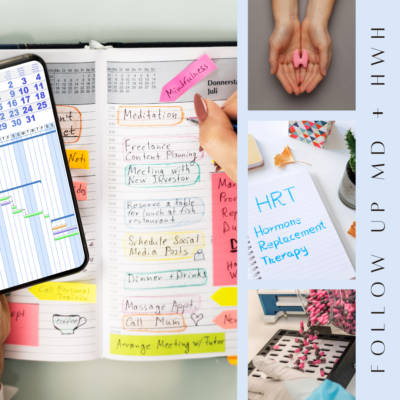Seed Cycling, It’s A No From Me
I posted recently about seed cycling for hormone balancing, and you guys blew up my DM’s! Asking me to do a longer post, to add citations if there were any, you wanted to know why I was a fan and now I’m not… So I decided a longer post was needed.
First off, if you want to attempt this you’ll need to do this religiously for about 3-4 months, otherwise there’s no chance of any benefit no matter how minute it may be.
Seed cycling is big in the non-prescriber community as a “remedy” that aims to balance estrogen and progesterone levels. I say non prescriber because when you can’t prescribe MUCH NEEDED hormones you need to find an alternative so you can stay relevant in the hormone conversation (and who can blame them?)
Seed cycling requires you to eat flax and pumpkin seeds during the first half of the menstrual cycle and sunflower and sesame seeds during the second half. It’s pretty simple really. The hardest part would be tracking ovulation.
What’s the research saying?
Well, it suggests that seed cycling won’t do much to balance your hormones. But I had given it a try anyway because research can sometimes take a while to catch up.
When I first started out almost 20 years ago, I wasn’t experienced nor was prescribing an option. I was in the process of my master’s degree (in clinical nutrition & integrative health), it wasn’t until 2010 that I would obtain my first recognized hormone certification. I didn’t have the amount of patients and testimonials that I do now. I was also highly plant-based (which almost killed me, but that’s a different post).
I believed in sprouting, seed cycling, juicing and smoothies. I was the healthiest sick person I knew.
I had energy- ish, felt pretty good too especially since I was only in my late 20’s! (Note the sarcasm there friends) But slowly in my 30’s my enzymes started to decline and my hormones joined them. That’s normal but seeds and nuts definitely made it worse (I wish I knew that then).
Fast forward to bringing on proper hormone testing, seeing how my patient compliance was (we all know how hard it is to start and keep a habit), and of course tracking lifestyle “stuff” I noticed that across the board the benefits were severely lacking. I was able to test patients and see at their 3-month follow-up what had improved if anything. The difference between seed cycling and not was nil. Although some patients reported less annoying symptoms (but the markers didn’t budge). After placing those same patients on compounded hormones the improvements were dramatic. There’s really no comparison.
Some of my PCOS patients did feel better on seed cycling, but zero improvement for menopausal women and other than some placebo it was pretty much zero for my permeno ladies too.
Evidence on seed cycling is non-existent, but the practice has been around for a long, long time.
Phase one starts the day of your period.
Flax and Pumpkin are thought to support the estrogen-dominant follicular phase when the ovaries increase estrogen levels in the body.
Flax seeds – are absolutely brutal for the digestive system. Ground up isn’t much better and the oil is trash. Whole seeds won’t break down completely in your gut, so grinding them enables your body to extract more “nutrients” from the seeds, but also more anti-nutrients. They are low oxalate for my oxalate-aware peeps out there.
A small study (18 people) published in 1993 found that when cycling women ate a traditional western, low-fibre, omnivorous diet supplemented with flax there were NO changes in estrogen levels. Their cycle length was slightly altered though so that’s interesting.
Pumpkin seeds also contain lignans as well as zinc. It has been shown that supplemental zinc may help with menstrual cramps (I prefer to use herbs for this as they are way more efficacious). If cramping is caused by excess prostaglandins then zinc would in theory decrease the metabolism of prostaglandins. While they are considered low oxalate, compounded with daily use I did find patients complimented of kidney pain. Oxalates are notorious for hiding in our soft tissues. Think chards of glass… it’s really not pretty.
The sunflower and sesame seeds used in the second phase are thought to support increases of progesterone in the luteal phase. They don’t.
Sunflower seeds there is absolutely zero evidence to support using these. The only thing I could find would be the content of vitamin E, but the amount required by our body wouldn’t be enough as far as the dose in this protocol to make it work. In 1972, a study was published on vitamin E and its similarity to estrogen and progesterone. Do we know what form of vitamin E it is? What does the body consider bioavailable? At least they are low oxalate.
Sesame seeds same deal here, eating the seeds increases levels of one form of vitamin E found in the body but zero increase in estrogen. It did decrease our SHBG which is a type of androgen. Sex hormone-binding globulin, if you know anything about hormones, is a big deal. However, the decrease was so insignificant and inconsistent that it wasn’t worth the ink used to write about it. Ok let’s talk about the oxalates- these are considered high ox meaning daily consumption plus other oxalate seeds will cause issues down the road.
Notice the use of the words “believed” and “thought”. Anyone using words in the definitive as far as far as seed cycling benefits is showing a clear lack of scientific sense.
Let’s talk about risks, benefits, & efficacy.
Benefits: Perhaps placebo. Some found period pain/cramping to be less. Better results utilizing herbs tbh.
Efficacy: None
Risks: Shockingly yes! Let’s get into it. Oxalates are a health no-no in my world, not talked about enough but definitely detrimental.
Lignans cut down free testosterone levels, ladies we NEED testosterone and most of us already have a massive decline. Sadly flaxseed is high in lignans, binding to our testosterone and forcing it to be excreted from your body.
What are the compounds with the so-called claims? We’ve got lignans, which are believed to weakly mimic some of the effects of human estrogen, but also are harmful.. oh and vitamin E. That’s not a lot to go on folks
Nuts and seeds contain antinutrients like phytates, protease inhibitors, and lectins, which contribute to inflammation, malabsorption, and disease. I avoid them and so do the majority of my patients.
Long after I realized seed cycling was BS and didn’t work to balance hormones, I then was alerted to the damage seeds can do. I mean wtf is an antinutrient? Is it just another buzzword or a fad? Yes, and no. The extremists would have us believe they are the devil himself, personally, I wouldn’t go that far. They ARE something I now caution my patients about. The ones who swipe left (that means reject) on nuts and seeds for 30 days find a difference in aches, pains and other health issues that they otherwise never would have attributed to so-called “healthy” foods.
That’s my take on seed cycling as a hormone expert, who regularly tests womens hormones.





